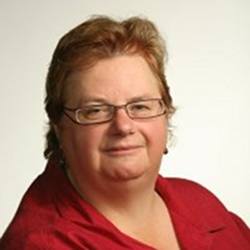
When ACM launched CSTA almost 10 years ago, the relationship between high school computer science teachers and post-secondary computer science faculty was like a marriage gone very badly wrong, with perceptions of mistreatment and not a little contempt on both sides. Much has happened to mend that relationship in the intervening years, but much more remains to be done if the union is to thrive.
Over the years, CSTA has worked very hard to mend this relationship. We’ve held workshops for college faculty to help them better understand how K–12 education works and how to build productive partnerships with teachers and administrators. We’ve provided standards to help improve what is being taught in K–12 classrooms (CSTA K–12 Computer Science Standards), and we’ve provided and partnered on professional development events that have served thousands of computer science teachers.
But perhaps more important than any of these, CSTA has served as a bridge between these two worlds, explaining each to the other and helping to facilitate greater understanding and better communication. For some post-secondary faculty, however, K–12 remains a foreign territory—little understood and not easily traveled.
When you talk to college faculty, they will tell you that working with K–12 educators can be exceedingly frustrating. Administrators and teachers do not return phone calls or respond to emails, schedules change with little or no notice, and teachers are resistant to spending out-of-school time on professional development opportunities and are averse to incorporating new technologies or teaching methods.
When you talk to K–12 teachers, they will tell you the post-secondary faculty are woefully ignorant of the realities of teaching in their environment. In K–12, most teachers teach six classes per day and an increasing number have no time in which to prepare lessons. Teachers don’t have phones. Some don’t even have desks. And very few have access to a networked computer on which they can answer correspondence during their teaching day. In many U.S. states, teachers do not make a living wage and so need to take second jobs and summer jobs to support their families.
Public school teachers do not have the luxury of teaching only the students who want to be in their classes. They must teach all of the students who come through the classroom door each day, including the ones who have been placed into the class by misguided counselors who see computer science courses as a place where students "get to play around on computers." And if any of those students fail the course, blame is placed on the teacher, not on the student. Frequently, computer science teachers are teaching multiple courses in the same room at the same time. Teachers must also respond to the helpful suggestions of everyone who thinks they know how to teach in a school because they have been to school (akin to thinking that everyone who has been to a dentist is automatically qualified to drill into and extract teeth).
Given these gaps in understanding, it is amazing that we have come as far as we have. Now, there are many large-scale cooperative projects that are changing the face of computer science education in several states. The work around the development of the new Computer Science Principles course (scheduled to come online as an Advanced Placement course in the 2016-2017 school year) is a classic example. This course has been supported by the College Board and the National Science Foundation, developed by committees of educators from the secondary and post-secondary levels, tested at pilot sites in high schools and universities, and elevated by a broad coalition of advisors from post-secondary institutions who helped hammer out the Big Ideas and attested to their willingness to offer placement or credit to students who successfully complete the exam. Computer Science Principles has the potential to impact all of computer science education in the United States because it has been a truly shared endeavor.
There is a white hot spotlight on K–12 computer science education right now, but I contend that we are only making the strides we are now making because CSTA has been here for the past 10 years, building the bridge of understanding and convincing both sides to walk across it, and because good people from both sides have been willing to work to bring this important union back into harmony.



Join the Discussion (0)
Become a Member or Sign In to Post a Comment